Weekend mornings feel different when your backyard invites you out with purpose. Whether it’s unwinding in a cozy corner, growing herbs that actually thrive, or finding storage that doesn’t ruin the view—smart backyard upgrades can redefine your outdoor lifestyle. These ideas aren’t just for looks—they solve real problems like limited space, lack of shade, or low curb appeal. This guide pulls together practical, high-impact solutions anyone can try, regardless of yard size or budget. If your goal is to make your outdoor area more functional, relaxing, and Instagram-worthy, you’re about to find ideas that genuinely work and are worth bookmarking.
Curved Brick‑Edged Corner Garden Nook
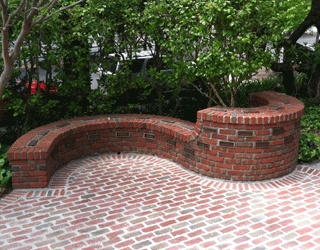
Shaping a peaceful retreat into an unused garden corner becomes instantly rewarding with a curved brick-edged layout. This design not only softens rigid angles but also draws the eye naturally inward, making the nook feel like a purposeful destination. Bricks provide warmth and grounding, while their rounded arrangement frames the area with elegance. A compact gravel base layered within the arc sets a calm foundation underfoot and prevents weed growth. Strategically planted lavender, boxwood, or low ferns introduce texture and privacy without overwhelming tight space. Folding chairs, a bistro table, or a stone bench can rest snugly inside the curve for afternoon reading or morning tea. This layout is ideal for shaded corners or awkward garden intersections that lack defined utility. For added charm, integrate solar-powered spike lights along the brick line to provide nighttime ambience. The overall effect transforms a neglected corner into a cozy, garden-framed escape. It’s particularly effective for small backyards, urban patios, or suburban gardens needing defined yet gentle structure. This simple architectural trick elevates atmosphere while demanding minimal upkeep, making it a favorite on social platforms where aesthetic meets function in everyday backyards.
Corner Seating with High‑Back Benches

Maximizing corner zones with high-back benches solves the dual challenge of space optimization and privacy. Instead of letting corners remain visually empty, fitted seating arranged in an L-shape introduces both structure and utility. Tall-backed designs serve as windbreaks while carving out a semi-enclosed feel, making the area feel more intentional. Cushioned seats invite longer stays, while the backs provide support for vertical accessories like hooks, planters, or even mounted solar lanterns. Popular materials include treated timber, composite slats, or reclaimed wood for a rustic touch. Storage-friendly options with lift-up seating offer bonus practicality in compact yards. This setup works exceptionally well against perimeter walls or wooden fences, instantly turning boundaries into zones of comfort. Adding soft throws or weatherproof cushions personalizes the corner further without taking away from function. When positioned under a tree canopy or beneath a shade sail, it doubles as a cool resting zone during warmer months. In Pinterest-worthy layouts, these benches are often painted in moody greens or soft off-whites to blend naturally with surrounding foliage. Whether used for entertaining guests or sneaking in a quiet break, this layout enhances flow while providing seating in often-overlooked corners.
Vertical Herb & Climber Walls
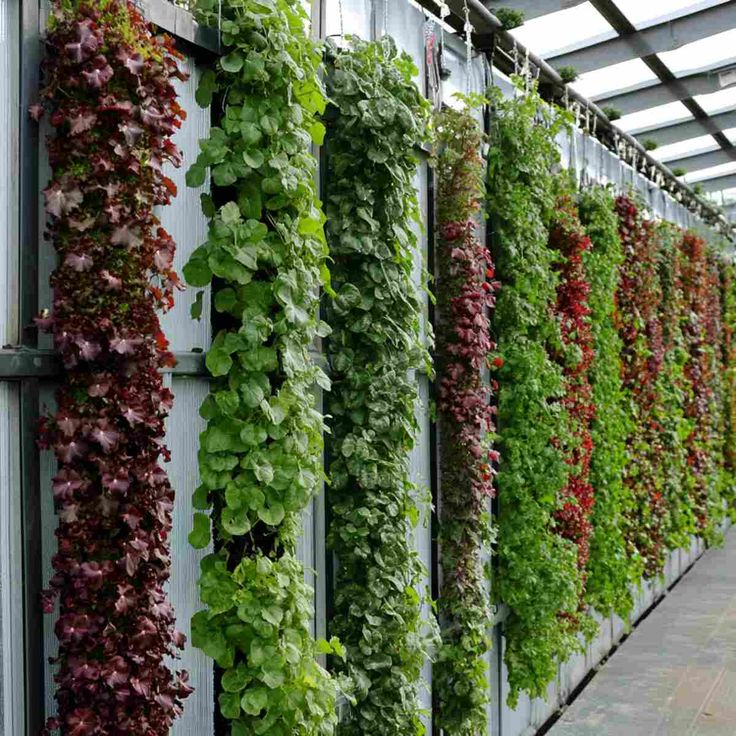
Using verticality for herbs and climbers is a smart way to expand planting without surrendering ground space. Slatted panels, wire grids, or hanging shelves can turn a fence or boundary wall into a lush, layered canvas. This technique boosts both yield and aesthetics—perfect for smaller backyards or balconies where every inch counts. Creeping thyme, mint, oregano, and rosemary thrive in wall-mounted planters with adequate drainage. Pair them with jasmine, clematis, or sweet peas for vertical coverage and scent layering. Timber frames or powder-coated racks are often chosen to complement natural elements while resisting weather. For visual balance, stagger the heights and pot sizes to avoid a flat look. Watering systems can be automated using dripper lines, reducing daily upkeep. Climber walls also serve as visual dividers, ideal for splitting zones between dining and lounging areas. By training upward instead of outward, homeowners gain a harvest-ready green wall with minimal footprint. This system is widely favored on Instagram and garden reels for its blend of beauty, utility, and compactness. It not only enhances air circulation but also helps in attracting beneficial insects like bees and butterflies, making it both an aesthetic and ecological win.
Mirror Panel to Visually Expand Space
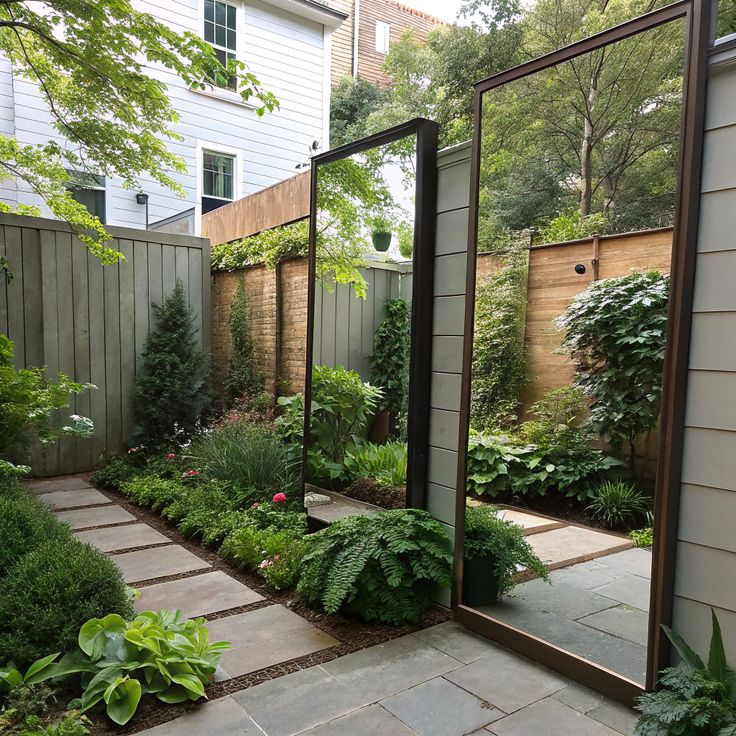
Reflective panels placed strategically within garden borders create the illusion of expanded space and light. Especially effective in enclosed or narrow yards, mirrors can mimic the presence of hidden pathways, extended foliage, or even a second garden room. Opting for weatherproof acrylic mirrors ensures safety and longevity outdoors. Mounting them slightly off-center behind tall planters, climbing vines, or rustic trellises blurs the line between real and reflected. Frame choices matter—aged wood, black wrought iron, or even windowpane-style borders contribute to the overall garden theme. Mirrors work best when not directly facing seating, to avoid discomfort from glare or heat reflection. Instead, they should reflect greenery, sky, or textured stone for maximum visual depth. This idea has become increasingly popular among urban gardeners and small backyard stylists on Pinterest, due to its transformative results in limited footprints. When paired with smart lighting or positioned to catch golden-hour sunlight, the effect feels whimsical and artistic. It’s an affordable trick that doesn’t require structural changes but can dramatically uplift the garden’s perceived scale. Whether leaning against a fence or integrated into a brick wall, a mirror panel offers visual play and added charm.
Terraced Stepping‑Stone Pathways

Sloped backyards or uneven terrain benefit immensely from terraced pathways using stepping-stones. This layered approach tames gradient changes while lending a structured, storybook-like charm to the garden. Instead of a straight slope, flat stone steps set into earthen terraces create a rhythm that’s both functional and picturesque. Natural stones like slate, sandstone, or bluestone are top choices for their traction and rustic elegance. These stones are spaced comfortably for walking while allowing groundcover like creeping thyme or moss to grow between them for softness and natural integration. Wooden retaining edges or corten steel borders keep soil in place and highlight each level. Terraced designs can guide visitors toward a focal point—be it a seating nook, water feature, or greenhouse—while breaking up the monotony of incline. This type of hardscaping has risen in popularity on landscape-focused platforms for its balance of structure and plantability. Lighting is often integrated along the edges using solar stake lamps or flush LEDs to ensure safe footing after dusk. Besides aesthetics, terraced stone paths help with drainage control and reduce erosion. It’s a high-impact upgrade for tricky topography, offering practical access and elevated visual appeal.
Low‑Level Modular Seating with Hidden Storage

Blending form and function, modular low-level seating with hidden storage is a staple in multifunctional backyard design. These units usually double as lounge spaces and storage bins for cushions, garden tools, or children’s toys. Built-in benches constructed from pressure-treated timber, composite decking, or recycled materials keep the space weather-resistant and visually cohesive. By hugging the ground level, they keep sightlines open, preserving the sense of spaciousness. Hidden compartments under hinged or slide-out seats maximize utility without visible clutter. Modular sections allow flexibility—arrange in U-shapes for entertaining or pull apart to accommodate garden changes over time. This solution is particularly favored in compact or urban outdoor areas where storage is scarce. Pair with neutral or earth-toned cushions for a grounded look that can be refreshed with seasonal colors. Pinterest boards and Instagram reels often showcase these seating styles alongside fire pits, gravel patios, or pergolas. The result is a seamless blend of lounging, stowing, and minimal maintenance. Integrated planters can be added at corners for extra greenery without overcrowding the layout. Whether for practical use or entertaining, this modular concept delivers versatility and style with limited effort and high aesthetic return.
Raised Planter Borders for Framing Zones
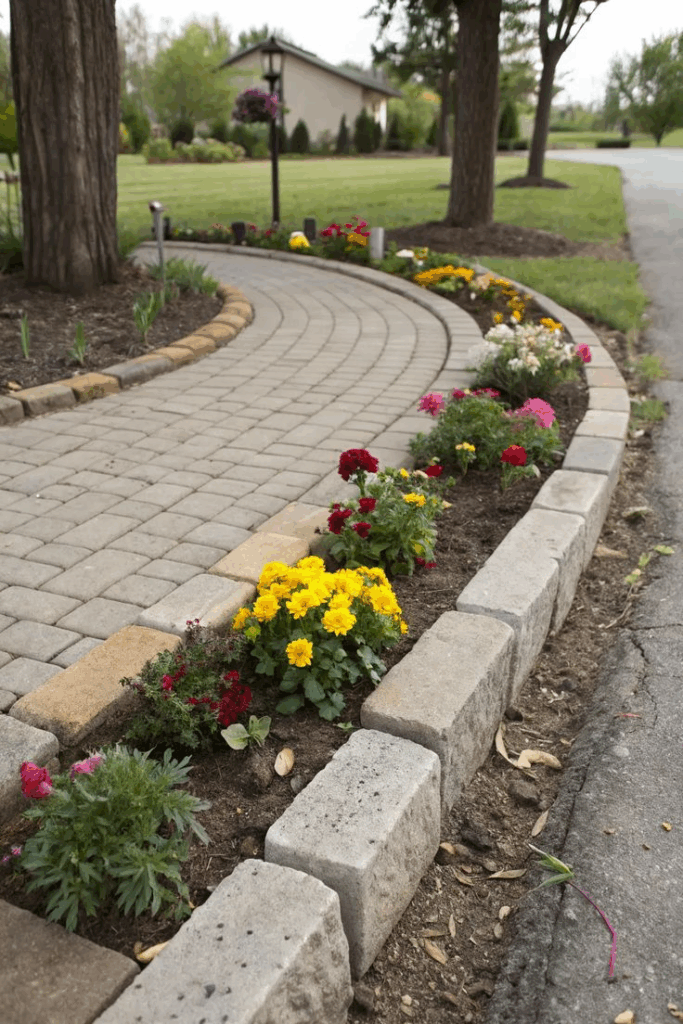
Framing outdoor areas with raised planter borders introduces natural boundaries while keeping the garden visually open. These raised edges act as living dividers, separating zones like dining, lounging, or play without relying on hard walls or bulky fences. Popular materials include stacked stone, timber sleepers, or rusted metal for a more modern rustic look. When filled with layered plants—such as ornamental grasses, flowering herbs, or compact shrubs—the planters soften space transitions while adding depth. Ideal for rectangular or open-layout gardens, this technique allows zone definition without compromising on cohesion. The added elevation also makes gardening more ergonomic and manageable, especially for older users. Seasonal color changes and vertical accents like trellises or obelisks bring dynamic visual movement to these borders. Lighting fixtures can be installed along the planter’s edge to subtly illuminate the zone it defines. This tactic is widely favored across garden trend pages for its ability to structure outdoor spaces elegantly. Besides organization, the raised beds improve drainage and protect roots from heavy foot traffic. Whether defining a patio edge or encircling a seating area, these bordered beds act as green anchors for backyard layout and style.
Bright White Patio Slabs to Lighten the Space
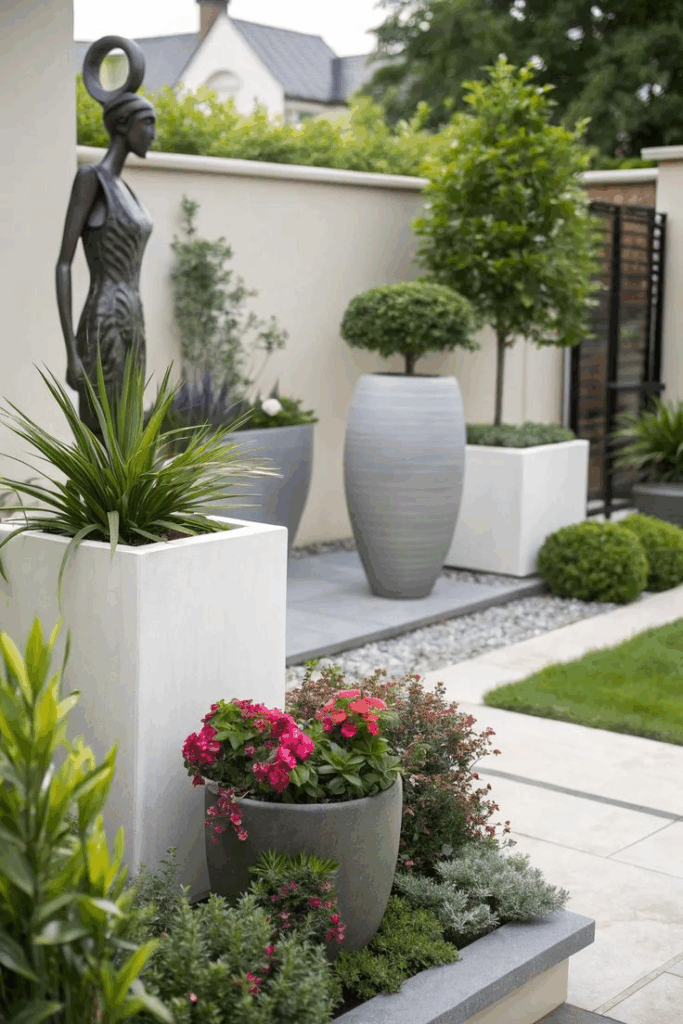
Choosing bright white patio slabs introduces a crisp foundation that reflects light, making even shaded or small backyards feel larger and cleaner. This material trick is especially effective in enclosed urban spaces that struggle with dimness. White or light-gray porcelain tiles are highly favored for their durability, weather resistance, and ability to maintain brightness over time. Their sleek surface creates contrast against surrounding greenery, enhancing visual clarity and freshness. When laid in a grid or offset pattern, they lend a modern polish without overwhelming the landscape. Adding gravel joints or small moss in between the slabs can soften the transition into more natural garden zones. This flooring choice is also a visual amplifier—sunlight bounces across the surface, creating a naturally lit effect that benefits adjacent planting beds. White slabs pair exceptionally well with black iron furniture, pale woods, and potted citrus or lavender. Pinterest showcases them regularly in clean garden makeovers due to their impact on perceived space and minimal upkeep. They also serve as a reliable canvas for styling seasonal decor or colorful outdoor textiles. Beyond looks, white slabs remain cool underfoot during warm months, adding comfort alongside design precision.
Hanging Baskets & Ladder Planters

Introducing height variation through hanging baskets and ladder planters gives life to underutilized vertical space without requiring major renovations. Baskets hung from pergolas, trellises, or sturdy hooks immediately inject bursts of color above eye level, creating depth and dimension. Cascading blooms like petunias, lobelia, and nasturtium add visual softness and seasonal fragrance. Meanwhile, ladder planters—leaned against fences or mounted flat—offer tiered growing spots for herbs, succulents, or small edibles. Both methods are especially effective in narrow yards or balconies where planting room is limited. Wood ladders with a weathered finish bring rustic charm, while painted ones can add a pop of color against neutral backgrounds. Coconut liners or geotextile pockets help retain moisture in hanging displays without harming the plants. Ladder systems often work as mobile features, easily rearranged for seasonal updates or sun adjustments. Gardeners on social media favor this combo for its blend of utility and decorative flair, especially when matched with string lights or mini garden signs. These vertical touches invite the eye upward, making even the smallest gardens feel curated and complete. The setup also encourages pollinator activity and can be adjusted quickly for changing weather or plant needs.
Mini Water Feature as a Focal Point
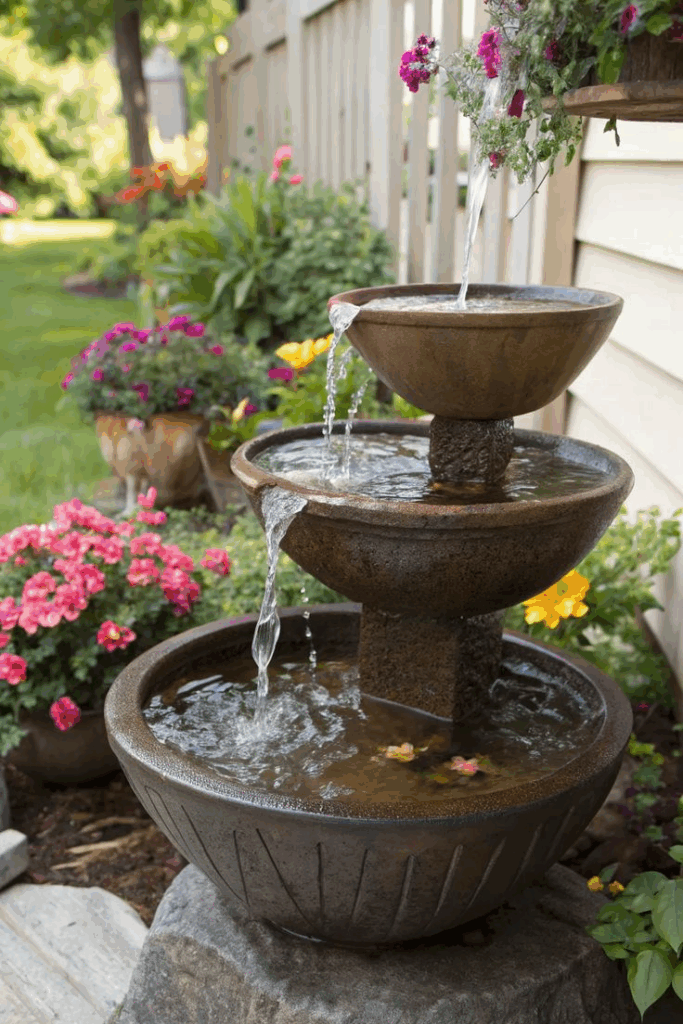
Installing a compact water feature introduces soothing movement and sound to the backyard without requiring large-scale construction. Whether it’s a small bubbling urn, a ceramic bowl fountain, or a sleek solar-powered cascade, these features provide a sensory anchor to the space. Water’s reflective surface enhances light dynamics and gives a cooling effect during warm afternoons. Compact designs allow easy placement within planter beds, beside seating areas, or at pathway junctions. Noise levels can be adjusted by flow control, making it perfect for masking street sounds in urban gardens. Stone basins or metal troughs lend a rustic or industrial tone, while ceramic bowls in Mediterranean hues bring a coastal vibe. Pump-operated systems with hidden reservoirs require minimal maintenance and are energy-efficient, especially with solar upgrades. Many backyard trend boards recommend surrounding the water feature with pebbles, ornamental grasses, or dwarf bamboo to blend function with beauty. Birds and butterflies are often drawn to these spots, contributing to garden biodiversity. Even in small square footage, a well-placed water element changes the ambiance instantly—making it ideal for mindfulness, evening relaxation, or adding a zen-like calm to everyday outdoor routines.
Mixed‑Material Hardscape Zones

Layering hardscape elements using different materials brings depth and contrast while maintaining flow across the backyard. Rather than sticking to one texture, blending gravel, flagstone, wood decking, and concrete pavers introduces natural segmentation of space. This approach defines different functional areas—like firepit zones, dining patios, or plant beds—without raising structural barriers. Gravel paths edged in timber can lead to sleek tile seating zones, while wooden planks under pergolas contrast beautifully with stone-bordered planters. This design logic is practical for drainage as well, allowing water to percolate through softer surfaces while preserving stability where needed. Texture mixing also reduces visual monotony, helping small yards feel layered and intentional. On-trend layouts often blend warm-toned woods with cooler-toned stones to maintain harmony. Earthy color palettes work best to ensure cohesion, especially when paired with consistent furniture tones or plant choices. Lighting further enhances the shift between materials—solar path lights on gravel or recessed LEDs on wooden decks subtly guide the transition. Instagram garden reels frequently showcase these multi-texture layouts due to their visual appeal and customization flexibility. It’s a scalable design approach suitable for DIYers and professionals alike.
Pollinator‑Friendly Wildflower Patch
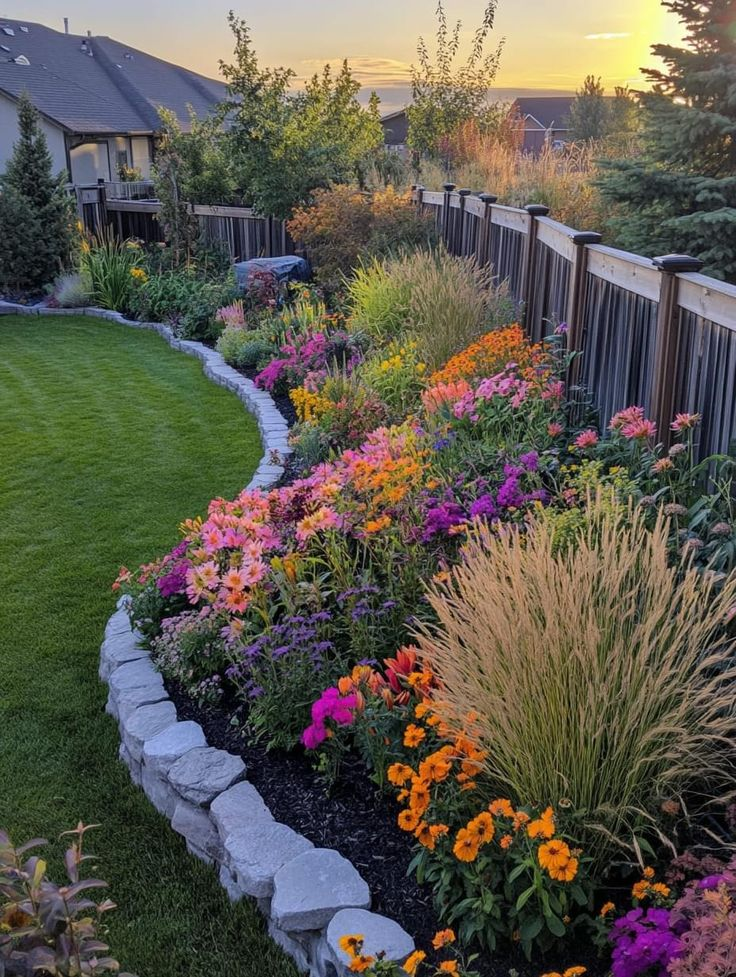
Planting a patch of wildflowers transforms unused lawn or corner zones into buzzing, vibrant ecosystems. These mini meadows require less maintenance than turf and actively support bees, butterflies, and other beneficial pollinators. Popular seed mixes include black-eyed Susan, cornflowers, cosmos, and milkweed—all of which bloom in staggered phases for season-long color. Raised slightly above ground level and surrounded by a low edge of stones or logs, this patch gains a natural boundary without visual clutter. Native wildflowers are preferred for their adaptability and hardiness, reducing the need for fertilizers or constant watering. For best success, sowing should happen during early spring or fall depending on climate zone. Mulching the area lightly can help suppress early weed growth. This style is widely shared across gardening blogs and Pinterest for its ecological value and low cost. Besides attracting winged visitors, wildflower areas bring movement and texture, especially when wind rustles through varied stem heights. When paired with a nearby bench or bistro set, it becomes a perfect place for nature-watching. Wildflower gardens also enrich soil quality over time, proving functional as well as ornamental. They represent a modern return to organic, purposeful landscaping in even the smallest backyards.
Lollipop Potted Roses for Vertical Height
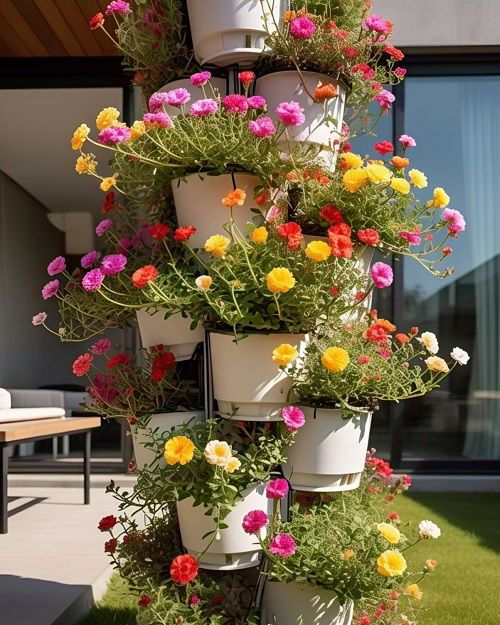
Using lollipop-shaped potted roses introduces controlled vertical interest while preserving ground-level space. These standard rose trees—grafted with a single tall stem and a rounded bloom crown—offer elegance and height without overwhelming nearby plantings. Positioned in large ceramic or terracotta pots, they can be flanked along pathways, near entry points, or beside garden benches. Their uniform silhouette adds symmetry, particularly effective when paired or mirrored in layout. Varieties like Iceberg, Olivia Rose, or Hot Cocoa are popular for their bloom density and disease resistance. Pots should include proper drainage holes and be slightly elevated with risers to prevent root rot. Surrounding the base with low-growing herbs or cascading lobelia can enhance the visual impact while maintaining soil moisture. These roses require occasional pruning to retain their lollipop form, and feeding with a rose-specific fertilizer helps prolong flowering. They’re often seen in cottage-inspired or formal backyard designs trending across garden-focused social media feeds. Beyond appearance, roses also attract pollinators and provide fragrance, enriching the sensory experience. The vertical element they offer is perfect for breaking up horizontal lines, adding sophistication to patios, decks, and borders alike. Their sculptural look makes them a standout feature with timeless charm.
Mini Potager with Compact Veggie Beds
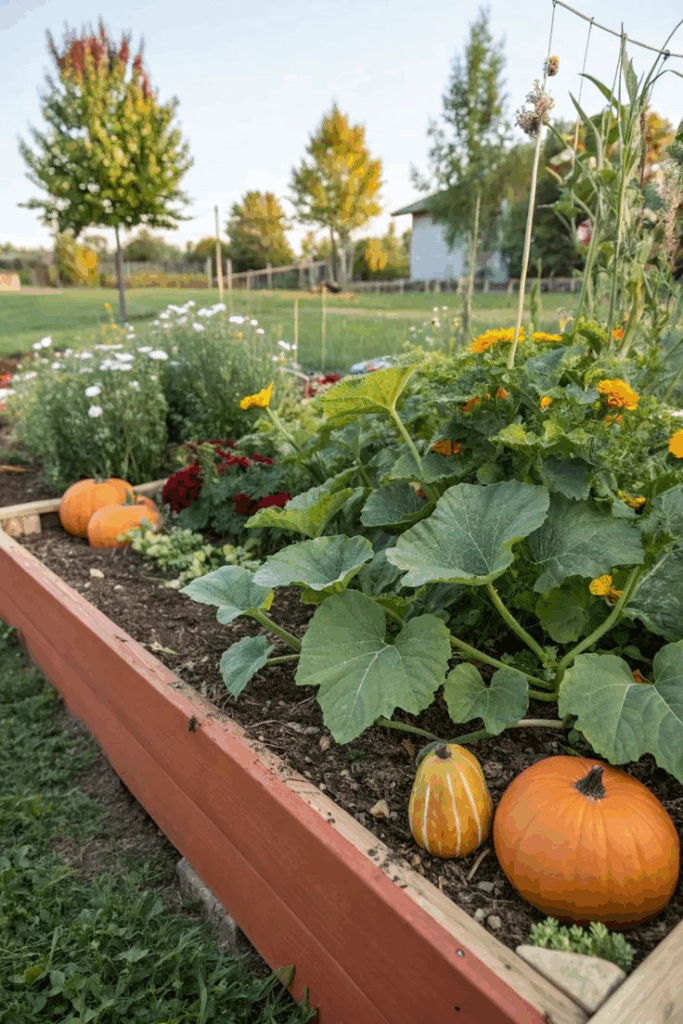
Designing a mini potager allows for growing vegetables and herbs in a layout that’s as beautiful as it is productive. Compact raised beds—often arranged in geometric patterns—help maximize yield within limited space. Wood-framed boxes, galvanized troughs, or even repurposed crates serve as excellent bed foundations. Strategic planting combines leafy greens, root vegetables, and flowering herbs for both utility and visual rhythm. Companion planting techniques—like basil with tomatoes or carrots near onions—improve growth while repelling pests naturally. To keep the garden visually engaging, intersperse edible flowers like nasturtiums or calendula for pops of color and pollinator appeal. Narrow gravel paths or stepping-stone access between beds ensure easy harvesting and upkeep. Arched trellises or obelisks at bed centers can host climbing beans or cherry tomatoes, offering height and drama without sprawl. Social media often features these setups in suburban yards or even city courtyards, where food-growing space is tight. This style celebrates self-sufficiency and turns outdoor areas into edible art forms. It also encourages seasonal engagement, as crop rotations and weather shifts keep the space evolving. Even with minimal experience, anyone can maintain a potager garden, making it a functional and aesthetic win for backyard upgrades.
Smart Lighting + Fairy Lights in Green Canopy

Evenings in the garden become magical with layered lighting integrated into greenery. By weaving fairy lights through tree branches, pergolas, or climbing vines, backyards gain a soft, twinkling ambiance that’s especially effective after sunset. These lights work best when combined with smart lighting elements like motion sensors, dimmable LED lanterns, or solar-powered spotlights. A balanced setup layers overhead glow with subtle uplighting from the ground or wall-mounted accents. Waterproof strands and smart plugs ensure long-lasting use without complicated wiring. Tree canopies, grapevine-laced trellises, or even espaliered fruit walls provide natural framework for stringing lights evenly. Gardeners often prefer warm white tones to keep the setting intimate rather than harsh. Instagram reels and Pinterest boards widely showcase this lighting concept for transforming ordinary backyards into festive evening zones. It not only beautifies but also improves safety by illuminating steps or pathways subtly. Lights can be scheduled via smart apps to sync with sunset times, making them efficient and low-maintenance. When placed strategically, this lighting plan enhances architectural features and plant textures without being overpowering. It’s a favorite approach for those who entertain outdoors or seek evening serenity among their green spaces.
